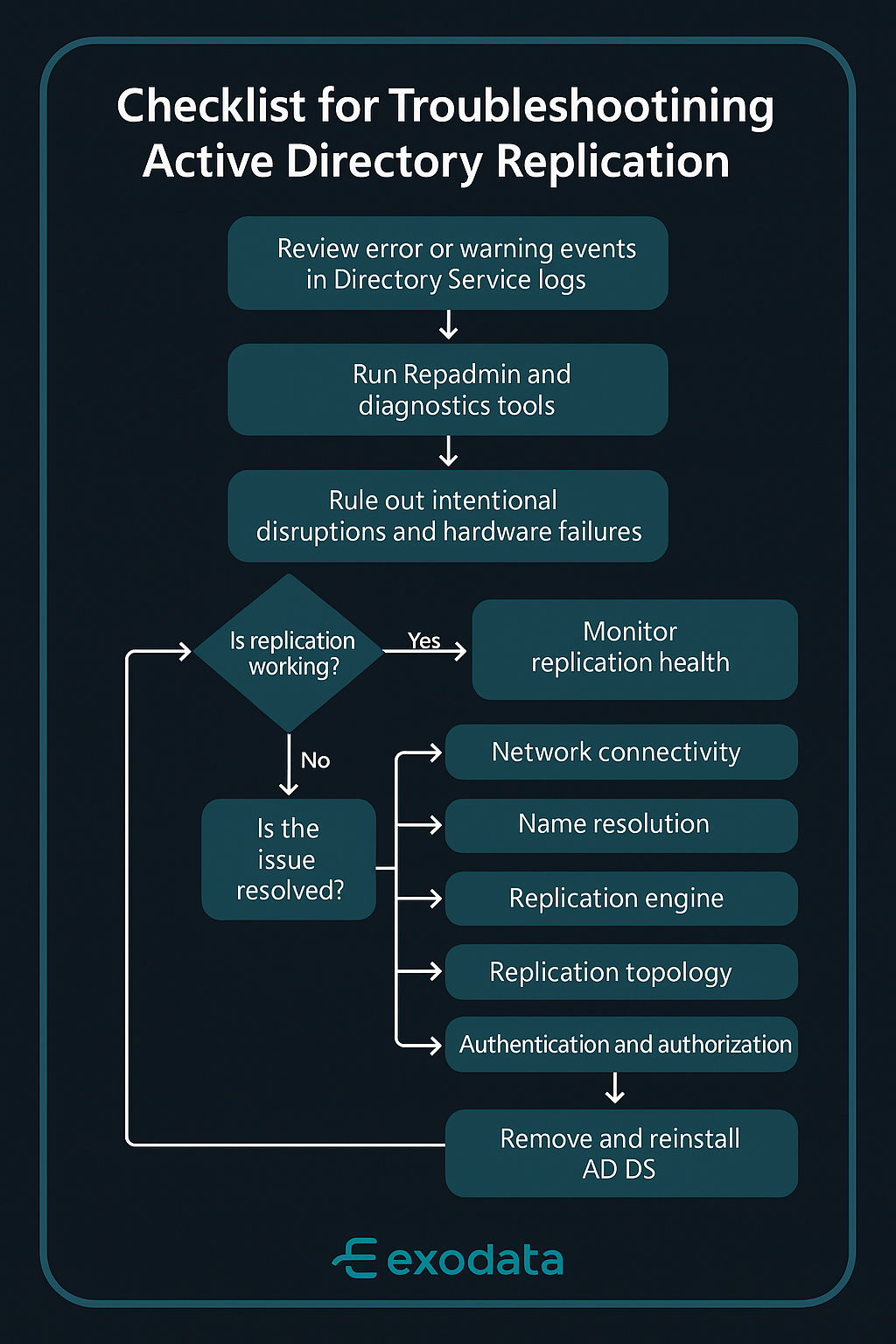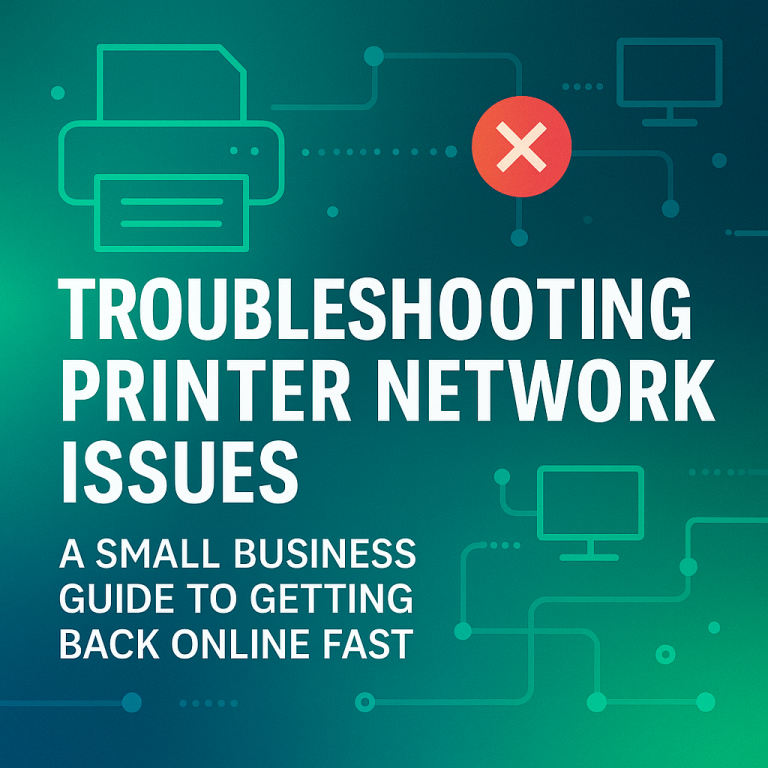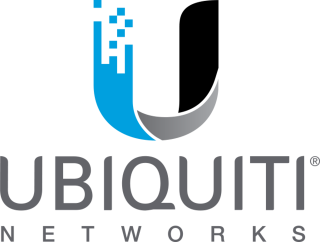Active Directory replication is one of the cornerstones of a healthy and reliable identity infrastructure. Whether you’re managing a single domain or a complex multi site topology, replication ensures that changes to user accounts, group policies, and configuration data are consistent across all domain controllers.
But when replication fails, the impact can ripple across authentication, application access, and security policies. In this article, we’ll walk through how AD replication works, common reasons it breaks, and how to resolve issues using tools like Repadmin and built in Windows diagnostics.
What Is Active Directory Replication?
Active Directory replication keeps directory data synchronized across all domain controllers in a forest. When a change is made like resetting a password or creating a new user replication ensures that this change is distributed to all domain controllers.
Replication happens either within the same site (intra site) or across different sites (inter site), depending on your AD topology. The replication engine uses Remote Procedure Calls (RPC) over dynamic ports negotiated via the RPC Endpoint Mapper on port 135.
Common Causes of Replication Failures
Many replication issues stem from common misconfigurations or network level constraints. Here are the most frequent culprits:
1. Network Connectivity Problems
If a domain controller can’t communicate with its replication partners, synchronization will fail. Check firewalls, VPN tunnels, and site links especially for branch office or hybrid deployments.
Tip: Ensure port 135 and the dynamic RPC port range are allowed between domain controllers.
2. DNS Misconfigurations
Active Directory is tightly coupled with DNS. If a domain controller can’t resolve its partner’s fully qualified domain name (FQDN), replication attempts will time out or fail.
Tip: Run
dcdiag /test:DNSand validate forward and reverse lookups.
3. Replication Topology Issues
If the logical replication topology defined in Active Directory Sites and Services doesn’t align with the actual network layout, links may become unreachable.
Tip: Confirm that your site link bridges, costs, and schedules align with WAN capabilities.
4. Authentication and Authorization Failures
If domain controllers can’t authenticate to each other—due to password mismatches, expired trust relationships, or missing permissions replication may be blocked.
Tip: Look out for “Access is denied” or Kerberos errors and confirm that the domain controller computer accounts are synchronized and healthy.
5. Database or Disk Bottlenecks
A domain controller with disk I/O constraints or database corruption may not process replication requests in time, causing delays or failures.
Key Tools for Troubleshooting
🛠 Repadmin
The repadmin utility provides detailed insights into replication health. Try:
repadmin /showrepl– Lists replication status and errorsrepadmin /replsummary– High-level summary across all domain controllersrepadmin /showconn– Visualizes connection objects
🛠 Event Viewer
The Directory Service event log is often the first place to look. Some notable events:
- Event ID 2042 – Indicates the tombstone lifetime has been exceeded
- Event ID 1925 – Shows no inbound replication partners
- Event ID 2087 – Suggests DNS resolution problems
- Event ID 2088 – May point to RPC or authentication failures
🛠 Support and Recovery Assistant
Microsoft’s Support and Recovery Assistant (SaRA) offers guided diagnostics for common replication issues.

Error Messages and Their Meaning
| Error/Event | Meaning | Suggested Action |
|---|---|---|
| Error 5 | Access Denied | Check permissions and authentication between domain controllers. |
| Error 49 | LDAP authentication error | Investigate synchronization with the Key Distribution Center (KDC). |
| Event 2042 | Tombstone lifetime exceeded | Metadata likely lost; consider decommissioning or forced removal. |
| No Inbound Neighbors | Replication topology issue | Use repadmin /showrepl to confirm partner links exist. |
| Cannot open LDAP connection | Connectivity or DNS issue | Validate FQDN resolution and firewall rules. |
How to Respond to Persistent Failures
If replication issues persist beyond event-level troubleshooting:
- Attempt to fix via
repadminor Event Viewer suggestions. - Uninstall software or services that interfere with RPC or LDAP communication.
- If necessary, decommission and rebuild the affected domain controller.
- Use Directory Services Restore Mode (DSRM) for forced removal.
- Clean up metadata with
ntdsutilbefore reinstalling AD DS.
Best Practices to Prevent Replication Issues
- Monitor replication daily using
repadminor automated health checks. - Ensure your site topology matches your real network layout.
- Avoid overly aggressive intersite replication schedules.
- Enforce consistent time synchronization and domain controller patching.
- Maintain proper DNS hygiene including reverse lookup zones and delegation.
Final Thoughts
Active Directory replication is critical to the health of your identity infrastructure. While many replication issues can be resolved quickly once identified, proactive monitoring and smart architecture decisions will help prevent them altogether.
At Exodata, we help organizations design and support robust AD environments from initial setup and replication strategy to health monitoring and recovery. Whether you’re maintaining a hybrid deployment or migrating to the cloud, we can help keep your directory secure, resilient, and in sync.
Need help troubleshooting or optimizing your Active Directory environment? Let’s talk.










